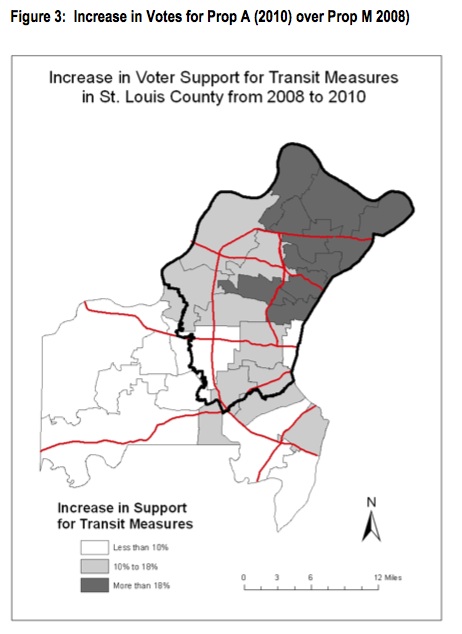My Transit Presentation at the Southwest Garden Neighborhood Meeting

Last night I spoke at the Southwest Garden Neighborhood meeting on the subject of transit. Â My presentation was billed on the agenda as “Everything you wanted to know about using public transit but were afraid to ask.” Â Not sure I lived up to that but here is what I presented:
- Transit is not just light rail, buses are the main component of the system
- Folks who’ve never ridden transit seem willing to try rail, but not buses
- Route and stops are easy to understand on rail, harder with buses
- Buses will get you more places, and closer to your start & end locations
- Bus fare is $2, a transfer is 75¢ extra
- Passes can be purchased for 2 hours ($2.75) , one day ($7.50), weekly ($23.50) and monthly ($68.00)
- Seniors and the disabled can get a discount. Â A special ID must be obtained from Metro.
- Passes are valid on buses in St. Clair & Madison Counties in Illinois.
- Wait for any passengers exiting the front door before boarding, exit the rear door when possible. Â Note the rear steps are steeper so some may find the front steps more comfortable.
The meeting was held at the senior center located at 5602 Arsenal, so I mentioned places that can be reached on the #30 “Soulard” bus along with the time to get there:
- Shrewsbury MetroLink 14 minutes
- Arsenal & Morgan Ford 5 minutes
- Grand & Arsenal 11 minutes
- Soulard Farmers’ Market 32 minutes
- 14th & Spruce 40 minutes
- Crown Candy 52 min
The SWGNA office is located at 4950 Southwest Avenue so I mentioned options via the #14 “Botanical Garden” and #95 “Kingshighway” buses.
- The Grove (Manchester & Tower Grove) – 11 minutes via #14
- Kingshighway & Chippewa 8 minutes via #14
- CWE Metro station 14 min via #95, 18 minutes via #14
- Kingshighway & Lindell via #95- 20 minutes
- Lambert Airport via #95 & MetroLink – 47 minutes
To drive the route to the airport it would take 20 minutes, 25 in traffic and is 15.7 miles. If you drove to catch a flight you’d need to consider the time spent parking at a long term lot and catching a shuttle bus to the terminal. Factor in the cost of gas, wear on your car and parking costs then transit might be a good option. Note that a late return flight might get you back too late to catch the last train. Â I once had to exit the last train at the CWE station and catch a taxi the rest of the way home.
And finally I listed some options from Hampton & Southwest via the #90 “Hampton” bus.
Of course everyone would need to map their specific origins and destinations. Â I find Google Maps far easier to use than printed maps and timetables. Â Metro’s website was recently updated to incorporate Google Maps.
For many getting to work via transit may not be a viable option, but we take so many other trips in our lives outside of getting top/from work.
Unfortunately due to the rain I had to drive my car rather than take the #30 bus. Â Thanks to Southwest Garden’s executive director, Dana Grey, for inviting me to speak.
– Steve Patterson



